A Deep Dive into the Risky Business of Paid Traffic Monetization. In the digital marketing world, few topics stir as much debate as AdSense Arbitrage 2025. For some, it’s a clever strategy to generate passive income; for others, it’s a high-risk hustle with a short shelf life. If you’re considering jumping into the arbitrage game in 2025, this article will walk you through how it works, the tools involved, the risks, and the harsh reality that many newcomers don’t see coming.
What is AdSense Arbitrage?

At its core, Google AdSense arbitrage is a traffic monetization strategy where a website owner purchases cheap traffic from one source and redirects it to a page monetized by Google AdSense (or a similar ad network) to earn more money than was spent.
In simple terms, how does make money with AdSense arbitrage work?:
- You buy low-cost traffic (e.g., $0.01 – $0.05 per click)
- Send it to high-earning pages on your website
- Earn more through ad impressions or clicks (e.g., $0.10 – $1.50 per click)
- Keep the profit margin
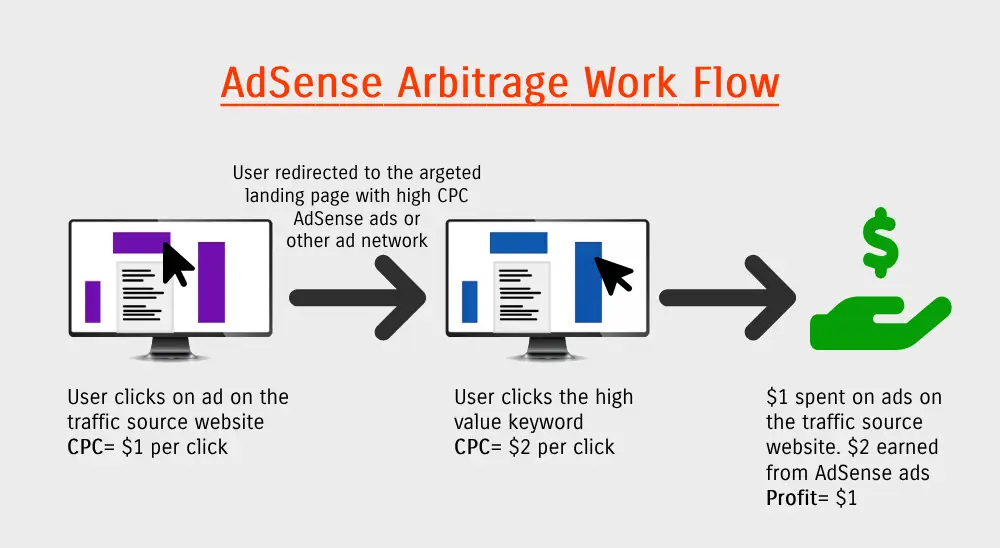
Sounds easy, right? Well, not quite.
How AdSense Arbitrage Typically Works
Here’s a basic outline of how arbitrage campaigns are usually set up:
- Website Setup
- A niche-specific site with high-CPC content (health, finance, tech, insurance)
- Articles are often SEO-optimized, clickbait, or emotionally triggering titles
- A niche-specific site with high-CPC content (health, finance, tech, insurance)
- Monetization
- Google AdSense or AdX is used to serve ads
- Often includes sticky ads, pop-ups, and in-feed ads to maximize impressions
- Google AdSense or AdX is used to serve ads
- Traffic Purchase
- Traffic is bought via Facebook Ads (Google AdSense arbitrage with Facebook Ads), Taboola (Taboola AdSense arbitrage), Outbrain, MGID, or other display ad networks
- Sometimes traffic is even purchased from mobile apps, push notifications, or pop-under ad platforms
- Traffic is bought via Facebook Ads (Google AdSense arbitrage with Facebook Ads), Taboola (Taboola AdSense arbitrage), Outbrain, MGID, or other display ad networks
- Traffic Routing
- Users are pushed through “funnels” to visit 3-4 pages minimum
- Headlines and design are used to keep them engaged long enough to see more ads
- Users are pushed through “funnels” to visit 3-4 pages minimum
- Profit Game
- Let’s say you spend $100 to drive 50,000 visitors
- You earn $200 from AdSense ads = $100 profit
- Let’s say you spend $100 to drive 50,000 visitors
Why AdSense Arbitrage Still Tempts People in 2025
With the rise of mobile traffic and viral-style content, arbitrage has had a bit of a resurgence. Platforms like Facebook still allow traffic buying, and many arbitrageurs have created cloaked campaigns that show different content to users than what they submit for ad review to get approval.
Plus, Google AdX (Google Ad Exchange – an alternative to AdSense) allows for higher fill rates and better CPMs for experienced publishers. But reaching this level is not for beginners. Because, to have Google Adx approval publisher needs to fulfill certain eligibility criteria, including but not limited Google Ad Manager Account, a Google AdSense Account, a legit website with high-quality content, and a significant traffic volume. Which is not a piece of cake for beginners.
The Harsh Truth: Risks of AdSense Arbitrage
I dived deep into it to learn more about whether the strategy still works, and I found certain risks involved in AdSense Arbitrage in 2025, which I would like to disclose here –
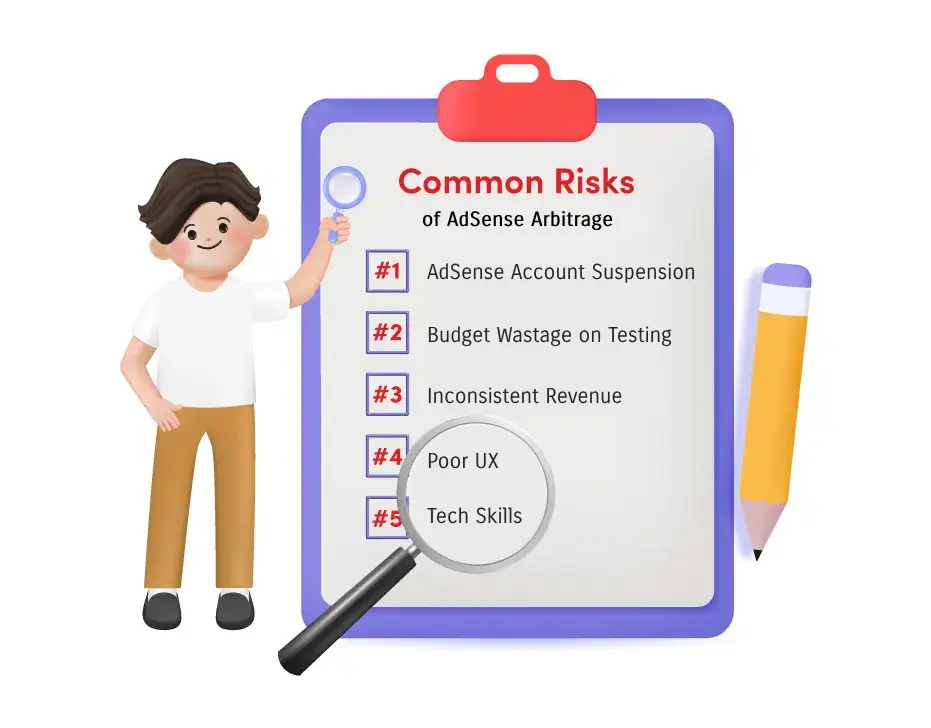
1. AdSense Account Suspension
Google’s policies prioritize user experience, trust, and transparency. Arbitrage sites often push the limits of these guidelines with deceptive ads, aggressive monetization layouts, or misleading content. If Google detects:
- Unusual click patterns
- Low-quality or thin content
- Excessive ad placements relative to content
It may first apply ad serving limits (reducing your revenue potential). Repeat violations often lead to complete account suspension, which can be permanent. Worse, once banned, it’s nearly impossible to reapply under the same identity.
For new publishers, this risk alone can destroy any long-term monetization plan.
2. Wasted Budget on AdSense Arbitrage Testing
AdSense Arbitrage is not plug-and-play. Successful campaigns often require extensive testing, sometimes across:
- Multiple headlines and ad creatives
- Varying content angles (e.g., emotional vs. informative)
- Demographic targeting and A/B split tests
- Traffic sources and landing page formats
You may burn through hundreds or even thousands of dollars before hitting a “profitable” campaign, and there’s no guarantee it will last for long. This makes it an unsustainable model for beginners or solo entrepreneurs without deep pockets.
3. Inconsistent Revenue
Unlike SEO-driven blogs that can enjoy passive traffic for years, arbitrage campaigns are not stable:
- Ad platforms update policies overnight
- Traffic costs fluctuate (often keep increasing)
- What worked yesterday might not work tomorrow
- One Google update can wipe out your site’s eligibility for monetization
You’re constantly chasing profit, and any pause in ads or changes in user behavior can collapse your margins instantly.
4. Poor User Experience
It has been seen that in order to keep the user engaged site’s use funnel and dragging the users to different pages or using a timer and asking the user to wait before showing the content, which indirectly leads to poor user experience, which slowly affects the whole arbitrage campaign. To maximize ad revenue, many arbitrage sites use:
- Clickbait headlines
- Auto-refresh or infinite scroll
- Multiple pop-ups and sticky ads
- Confusing navigation to push multiple page views
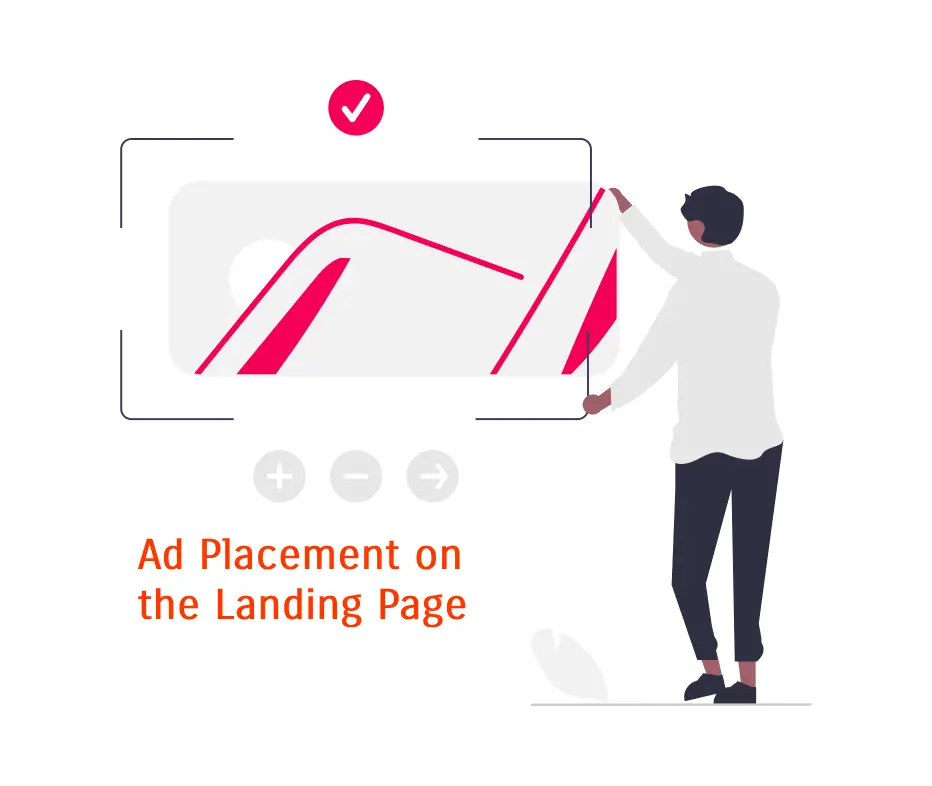
This leaves users frustrated, unlikely to return, and more importantly, it tells Google your site isn’t providing real value. High bounce rates and short session durations are negative signals for both SEO and AdSense.
Building trust and brand loyalty becomes impossible in such a setup.
5. Requires Technical Know-how
Running a successful arbitrage operation is far from beginner-friendly. You’ll need:
- Conversion optimization: Optimize each funnel step to keep visitors on-site
- Ad operations: Manage ad placement for compliance and performance
- Analytics tracking: You need to be skilled in tools like Google Tag Manager, RedTrack, or Voluum etc.
- Ad policies: Constant monitoring of Facebook Ads, AdSense, and content policies to avoid bans
Unless you’re an experienced marketer with a background in performance marketing, analytics, and compliance, you’re likely to run into costly mistakes.
Ethical Considerations
Let’s be honest, arbitrage often walks a fine line between ethical and misleading practices:
- Clickbait titles
- Deceptive ad placements
- Dragging users through content they didn’t intend to see
While not illegal, it’s often considered an “AdSense arbitrage blackhat” monetization strategy.
Alternatives to AdSense Arbitrage
If you’re serious about building a long-term online income stream, here are safer options:
1. Content Blogging with SEO
Build a blog around a niche you care about, using SEO strategies:
- Research low-competition keywords
- Write in-depth, helpful articles
- Build quality backlinks and improve domain authority
- Monetize through display ads (AdSense), sponsored content, or courses
This takes time but creates a sustainable and long-term income stream
2. Affiliate Marketing
Instead of pushing traffic to see ads, guide users to products or services they’re already searching for.
- Choose affiliate programs with fair commissions
- Write honest product reviews, comparisons, and tutorials
- Use SEO and email lists to drive ongoing revenue
It’s less reliant on ad networks and more focused on user trust and conversions.
3. YouTube + Blog Integration
Video content is booming. Combine your blog with a YouTube channel to:
- Increase your reach
- Build audience trust through visuals and voice
- Drive traffic both ways, YouTube to blog and vice versa
- Monetize with both AdSense (YouTube) and blog monetization tools
This approach also improves SEO through Google-owned platforms.
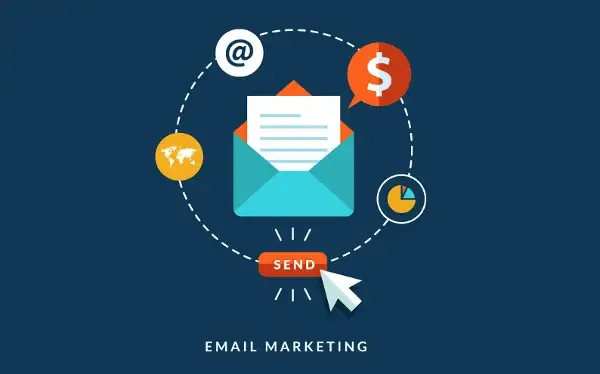
4. Email Marketing
Build a community with an email list. This gives you:
- Direct access to readers
- Control over your audience (unlike rented traffic)
- Recurring monetization through newsletters, promotions, and product launches
Pair this with a blog or YouTube and you’ve got a powerful brand-building machine.
Final Thoughts: Is It Worth Doing Google AdSense Arbitrage In 2025?
For most people, especially beginners or solo creators, AdSense arbitrage is not worth the time, cost, or stress. It demands:
- Continuous ad spend
- Advanced technical skills
- Constant adaptation to algorithm and policy changes
- Tolerance for ethical gray areas
Worse, it builds no real brand or long-term value. You’re chasing temporary gains with permanent risk.
If your goal is to build a business, grow a brand, or earn passive income over time, stick with value-driven strategies like:
- SEO blogging
- Affiliate content
- Email list building
- Community-focused content
AdSense arbitrage might work for short-term gains, but long-term growth comes from creating something people genuinely want to read, watch, or follow.
So, arbitrage can work temporarily. But if you’re new to digital marketing, it’s a dangerous trap.
Google doesn’t like arbitrage. It favors high-quality content, great user experience, and ethical practices. If you’re building a brand or long-term blog (like a niche site), stay away from arbitrage.
AdSense arbitrage is risky, unstable, and often unethical. It may make money short-term, but long-term success lies in real value creation. Focus on content, SEO, and user trust.
Have you experienced the Google AdSense Arbitrage 2025 working method? Share your thoughts or war stories in the comments.
You may also read: Warning: Account Receivable Agent Job Scam” Targeting Freelancers in 2025





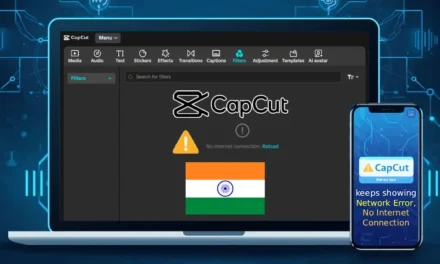
Recent Comments